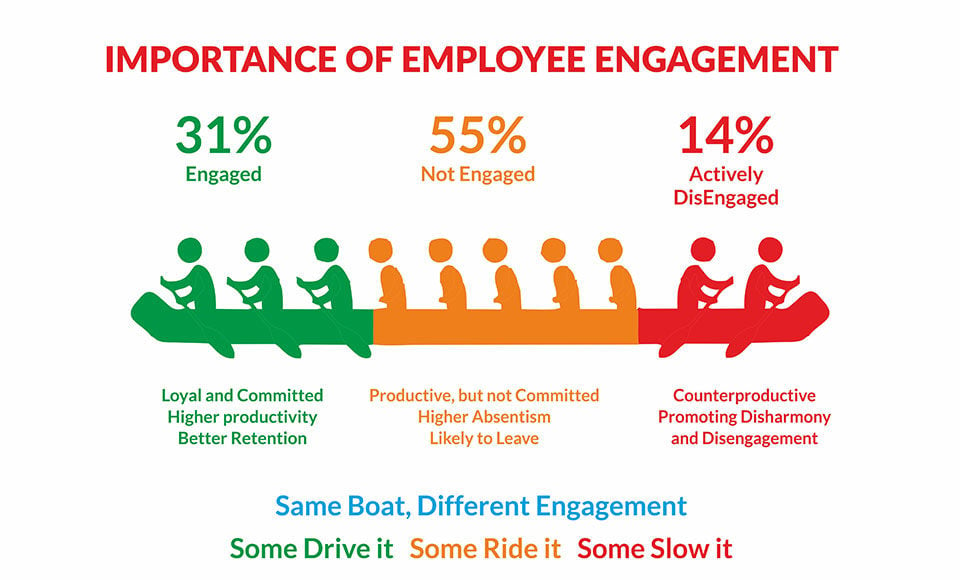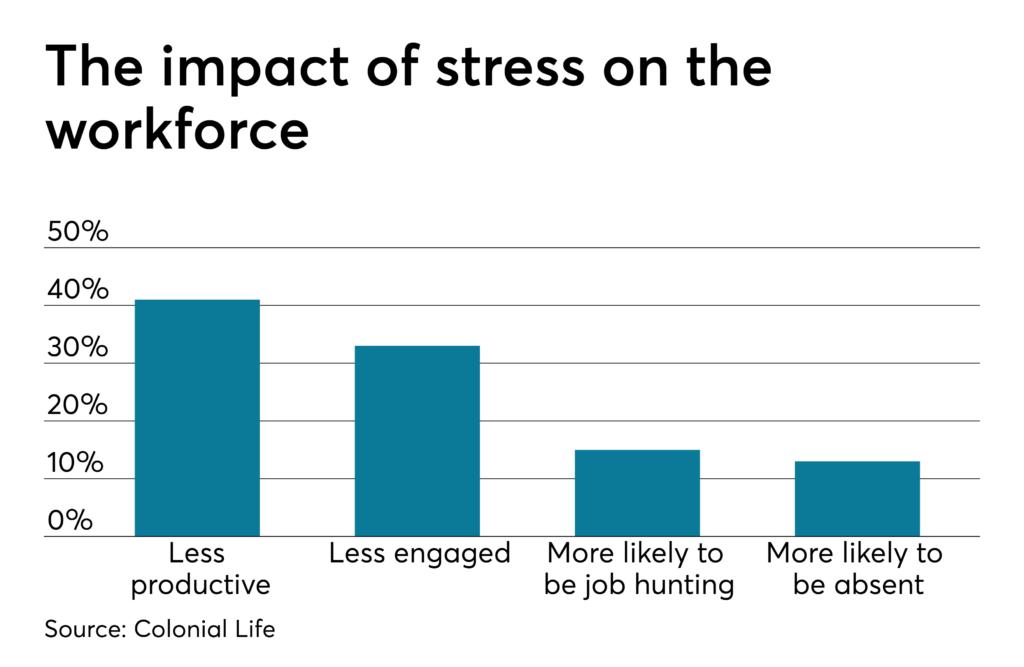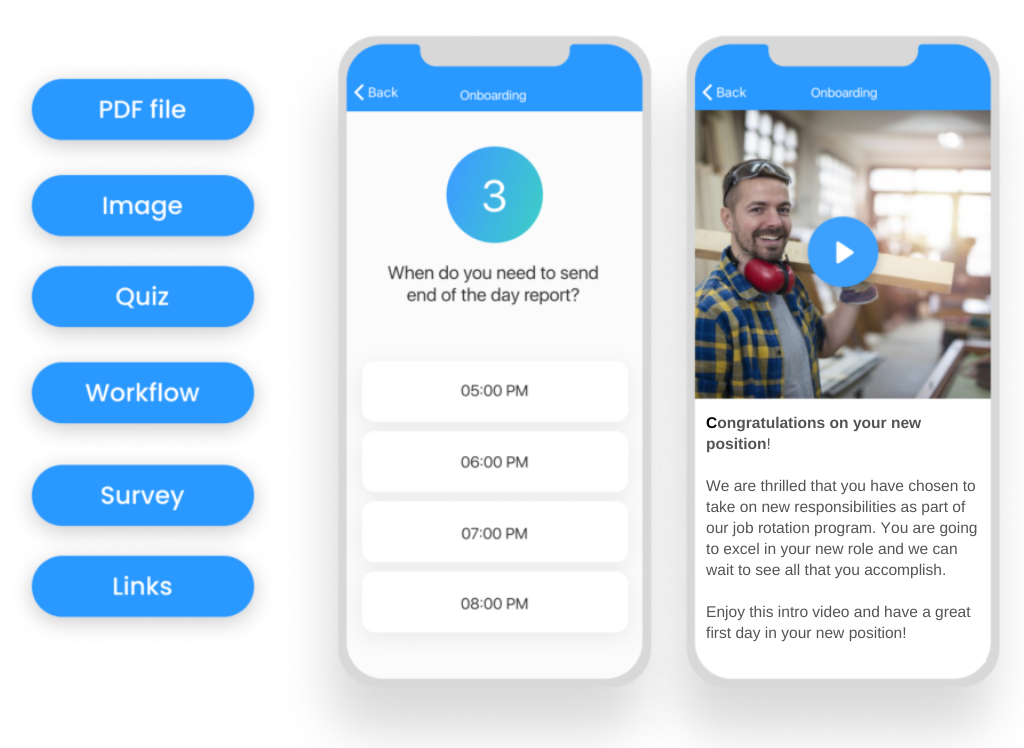Companies can’t expect their employees to stay engaged in their current positions forever. Rotating jobs can provide workers with fresh new opportunities and responsibilities. But it’s not for everyone. Let’s take a look at the advantages and disadvantages of job rotation.
Let’s face it – many of your employees want to move up the ladder. If you’re not giving them the tools to do so, they will search for opportunities elsewhere.
The truth is that you can keep any talented, hardworking employee around. All you need to do is show them that they can dip their toes into new roles.
And who knows? It might be the difference between staying and leaving. When employees rotate jobs, they can develop new skills without changing companies.
But job rotation isn’t a “one size fits all” approach. This guide breaks down the main pros and cons of this process.
Once you’ve read them, you can decide if creating a job rotation program is a good idea for your business in the long run.
What Exactly Is Job Rotation?
The definition of job rotation is actually pretty simple when you break it down into its two words. It’s basically a strategy companies use to allow employees to rotate between jobs.
For a specific time period, the employee will perform the tasks of a different job before reverting back to their original job.

While job rotation can be a useful strategy in theory, there are specific criteria to building an effective program.
3 Steps Every Job Rotation Program Needs
Any successful job rotation program needs to take the following three steps:
- What are the goals of the program?
- Design the program – who will rotate their job and what new positions will they adopt?
- Evaluate the success of the program – are the company and employees generally improving from job rotation? If not, why?
It’s also worth noting that job rotations shouldn’t be confused with job promotions. While promotions can result from successful job rotations, they are not guaranteed.
Now that you know the definition of this work strategy, you might be tempted to create your very own job rotation program for your company. But it’s important to weigh out the pros and cons first before you do.
Job Rotation Advantages And Disadvantages
There are a variety of advantages and disadvantages that come with building a job rotation program for one’s company. Truth be told, this strategy will not suit all companies, so read the following pros and cons before you let your employees rotate jobs.
5 Advantages Of Job Rotation

Highlights Employee’s Strengths
Managers can’t always expect employees to do everything right. Working out each employee’s strengths and areas for improvement ensures that they are always on the road to reaching their full potential.
It’s worth noting that job rotation specifically identifies what jobs your employees are naturally stronger at. Rotating the role may put them in a position that suits them better than the previous one.
Prevents Boredom and Stagnation
Employee engagement is something that companies are taking more and more seriously as time goes on. According to a study, global employee engagement decreased from 22 to 20% from 2019 to 2020 – coinciding with the pandemic. That means that a large chunk of the global workforce isn’t completely engaged with their current jobs. As a result, they may feel tempted to seek new challenges elsewhere.
A job rotation program could potentially solve this problem. New responsibilities can give employees a new lease of life at work, and potentially keep them at the company.

Promotes Development
According to Gallup, 59% of millennials look for new jobs in order to find new opportunities to grow professionally. Many companies want to see their employees grow in experience and responsibility with time, without needing to move elsewhere.
Job rotation teaches employees new skills and as a result, sends a message that the company encourages professional development. If an employee feels like this is a core value of the company they work for, then they might be more aligned with the company culture and not feel the need to move.
Prevents Fatigue
While all jobs can be tiring, industries that demand heavy labor can benefit heavily from job rotation. Employees in fields like construction and delivery can benefit from rotating responsibilities. Fatigue becomes less likely when all employees are taking turns doing each job. For example, if an employee is used to lifting heavy items, they might benefit from doing some less physically demanding jobs like paperwork.
Contingency Plan For Turnover
While employee turnover can cost companies time and money, job rotation could help alleviate this problem in the future. The more versatile employees become, the less urgent it’ll be to hire if someone leaves the company.
HR managers are more likely to hire internally if your current staff tick all of the boxes in the job description. At the very least, employees can perform outstanding tasks while searching for a long-term replacement.
Pro Tip
Use one of the best free hr software solutions such as Connecteam to manage your staff. Our all-in-one employee management software includes employee profiles, team chats, employee timelines, and many more features that will help you perfectly manage your staff’s job rotation.
5 Disadvantages Of Job Rotation

Can Cost A Lot Of Time And Money
Training employees isn’t cheap, by any means. In fact, companies generally spend thousands of dollars and sometimes months training new staff members.
According to a study by the Association for Talent Development, it costs on average about $1,252 to train each employee, and about 33.5 hours.
Job rotation is going to lead to more training expenditure and time, so this is something companies must consider.
It Doesn’t Suit All Industries
As previously mentioned, there are some industries that will benefit more from job rotation than others. Also, there are companies that won’t benefit from it at all. Industries that require employees to be highly skilled in specific roles (doctors and lawyers) won’t benefit from job rotation. Also, workers that require years of training won’t benefit either.
Highly skilled workers who don’t benefit from job rotation include:
- Engineers
- Scientists
- Doctors
- Teachers
Vocationally educated workers that don’t benefit from job rotation include:
- Truck drivers
- Plumbers
- Machinists
- Cooks
- Craftsmen
- Accountants
Employees Might Perform Worse
It’s also worth noting that job rotation might not suit all employees. Some employees may be successful and comfortable in their current role and there might not be an employee who does their job better.
Some employees might not be interested in learning new skills, so being forced to rotate jobs could affect their performance and their employee experience in general.
It Could Negatively Impact Your Company
In the worst case scenario, implementing a job rotation program might cause damage to your company. When employees are stepping out of their comfort zones, they might be more prone to making mistakes. Job rotation can potentially lead to unsatisfied customers, stressed employees and slow operations.

It Won’t Fix Every Problem
You’d be naive to think that job rotation will solve every problem your company faces. A number of other factors can impact employee engagement, turnover, and poor company culture.
While job rotation can be useful, it should not be used as a quick fix. It’s more important to get to the root of your employee’s problems before taking major steps.
Job Rotation Best Practices
Pros and cons aside, there are definitely wrong ways to rotate your employees’ jobs. Consider the following practices when building a job rotation program for your team.
- Only job-rotate for a good reason: There is no point in job-rotating your employees if you haven’t worked out why you should do it, to begin with. Not only is it inefficient to randomly place employees into new jobs, but also affects workplace productivity and morale.
- Don’t force job rotation on your employees: Instead of rotating your employees’ jobs without giving them a choice, it might be more effective to convince them that job rotating is the right move for them by explaining the benefits.
- Train your job rotators thoroughly: It’s not enough to simply throw an employee into a new job. You need to give them the learning resources and tools they need to ease into their new role. We recommend giving job rotators an onboarding buddy to make the transition smoother.
- Oversee and evaluate every step: When an employee has rotated jobs, it’s important to keep an eye on their progress and provide relevant feedback so they can become more independent in their new role.
- Create a clear path for each employee: Beyond rotating jobs once, employees can benefit from having a clear path laid out. With career pathing, employees clearly see the opportunities ahead of them and the natural path they can take to get there.
Create An Effective Job Rotation Program With Connecteam
Implementing a Job Rotation Program
There are a handful of important steps that you need to follow if you want to seamlessly bring job rotation into your business operations. To implement a job rotation program, you need to:
Set Clear Goals
What is the purpose of your job rotation program? Why are you implementing it and what are the goals you want your employees to achieve from it? Some typical goals might include:
- Providing employees with more responsibilities
- Increasing employee knowledge and skills
- Preventing stress and burnout
Create Criteria
Every program needs clear steps and guidelines to follow – and a job rotation program is no different. Breaking down your criteria into who, what, where, when, why, and how can help. Here is an example of how these criteria can look:
- Who is rotating jobs?
- What is job rotating protocol?
- Where in the business will employees rotate to?
- When will they rotate their jobs?
- Why are they rotating?
- How will you help your employees rotate effectively?
It might be worth adding these criteria to employee resources (like an employee handbook), which they could access in paper form, from their computer, or maybe even from a mobile platform.
Evaluate the Program
You need to evaluate the success of your job rotation program – both in terms of how it’s benefitting your business and employees. One way to understand if your program is successful or not is by giving your employees feedback surveys to measure how engaged and satisfied they are with their job rotation.
Use The Latest Technology To Implement Your Job Rotation Program
Using the right software to implement your job rotation program can simplify the entire process.

With apps like Connecteam, you can rotate your employees’ jobs in a few clicks, both from laptops and mobile phones. Employees can benefit from the following features:
- Share training resources in various formats such as files, PDFs, videos, and images. Make job rotation as engaging and informative as you need.
- Test job rotator’s new skills and knowledge with online quizzes.
- Track and measure individual progress on training resources. Highlight team members’ strengths and weaknesses in new jobs.
- Use automated insights to evaluate your job rotation program.
- Provide employees with feedback on their new jobs through evaluation forms. Employees can also submit feedback about the job rotation program.
Employees can refer to all materials, long after completing training. They can solve problems without waiting for your response.

When it comes to job rotation programs, managers can use the app to:
- Create checklists detailing everything employees need to do during onboarding. Employees can easily check off tasks and training steps.
- Create quick tasks with a couple of clicks. Include task descriptions, subtasks, and images/documents.
- Sign off on new equipment for new jobs.
Learn how happy employees are in their new job with employee satisfaction surveys.

The Bottom Line On Job Rotation
At the end of the day, job rotation isn’t for everyone. Some industries don’t need (or simply should not) rotate their employees, for various reasons.
With that said, companies from relevant industries should use the latest software like Connecteam to understand their goals, design their job rotation program, implement it and evaluate its success.
This will help managers and employers follow these steps and maximize the chances of improved employee engagement, retention and development.




